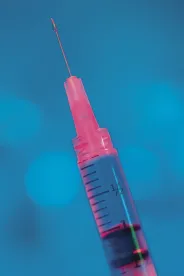Almost thirty years after the last substantive change to the federal regulations governing the confidentiality of alcohol and drug abuse patient records, the Substance Abuse and Mental Health Services Administration (SAMHSA) today published a proposed rule (Proposed Rule) to modernize the regulations at 42 CFR Part 2 (the Part 2 Rule). Public comment period on the Proposed Rule is open until April 11, 2016.
In recognition of the significant changes that have occurred within the United States health care system, SAMHSA proposes to update the regulations to facilitate the electronic exchange of substance use disorder information for treatment and other legitimate health care purposes — without compromising the key role of the regulations in protecting patient privacy. Federal officials are concerned that the Part 2 Rule makes it difficult for patients whose health records contain substance abuse treatment data to receive care from providers participating in alternative payment models, because these models emphasize coordinating patient care with other providers and analyzing patient records for insight into quality improvement. The Proposed Rule is intended to ensure that patients with substance use disorders have the ability to participate in new integrated health care models like accountable care organizations and health homes without fear that sensitive information will be used against them.
Under the Proposed Rule, significant changes would be made to the consent requirements to allow patients to authorize disclosures to entities like health information exchange organizations (HIEs). In addition, SAMHSA proposes several key clarifications: (1) that population health activities are among the scope of activities that can be conducted by a qualified service organization (QSO), (2) that the Part 2 requirements do not apply to general medical practices, and (3) that the prohibition on re-disclosure only applies to information that would identify, directly or indirectly, an individual as having been diagnosed, treated, or referred for treatment for a substance use disorder. Other updates have also been proposed to provide more discretion for providers to determine when a “medical emergency” exists, address electronic records (such as clarification that e-signatures are sufficient for consent forms), and liberalize the requirements for research disclosures.
Consent Requirements
Currently, the Part 2 Rule requires written patient consent for most disclosures of patient substance abuse records. The consent must specify the name or title of each individual or the name of each organization to which disclosure is to be made. In a significant departure from the current approach, however, the Proposed Rule would allow the consent form to identify as recipients an entity like a health information exchange organization or a research institution and to generally designate providers with a treating provider relationship with the patient. For example, the proposed change would allow a patient consent form to designate as authorized recipients a named HIE and “my treating providers.” The Proposed Rule notes that such a general designation would require the HIE to have a mechanism in place to determine whether a treating provider relationship existed with the patient, such as a method for patients to designate treating providers through a patient portal. Additionally, the Proposed Rule would require that the HIE provide patients who have consented to disclose their information using a general designation, upon their request, with a list of entities to which their information had been disclosed within the last two years pursuant to the general designation. The requirement to provide such an accounting would not take effect until two years after the effective date of the final rule. In addition, SAMHSA proposes to allow electronic signatures, to the extent permissible under applicable law.
Qualified Services Organizations
The current Part 2 Rule authorizes disclosure without patient consent to QSOs that provide services to a Part 2 program if certain requirements are met. The Proposed Rule would clarify that population health management is one of the types of services that may be offered by a QSO. According to the preamble, a Part 2 program could disclose information under a properly executed QSO agreement to the office or unit responsible for population health management in an organization like an ACO, health home, or managed care organization. However, the preamble also clarifies that care coordination was deliberately not added to the list of examples of QSO services in the Proposed Rule because it includes a patient treatment component, which is not an appropriate reason to disclose information to a QSO.
Application of Regulations to General Medical Practices
SAMHSA is proposing changes to the “Program” definition. In recognition of the fact that more substance use disorder treatment services are occurring in general health care and integrated care settings, the Proposed Rule would clarify that the definition of “Program” would not apply to “general medical facilities” and “general medical practices,” unless an identified unit within a general medical facility or general medical practice holds itself out as providing, and provides, substance use disorder diagnosis, treatment, or referral for treatment, or if the primary function of medical personnel or other staff in the general medical facility or general medical practice is the provision of such services and they are identified as providing such services. Further, the Proposed Rule adds a definition of “holds itself out” to mean any activity that would lead one to reasonably conclude that the individual or entity provides substance use disorder diagnosis, treatment, or referral for treatment, including but not limited to:
-
Authorization by the state or federal government (e.g. licensure, certification, or registration) to provide such services;
-
Advertisements, notices, or statements related to such services; or
-
Consultation activities relative to such services.
Prohibitions on Re-disclosure
SAMHSA proposes to clarify that the Part 2 prohibition on re-disclosure only applies to information that would identify, directly or indirectly, an individual as having been diagnosed, treated, or referred for treatment for a substance use disorder, and could allow re-disclosure of other health-related information disclosed by a Part 2 program. For example, if an individual receives substance use disorder treatment from a Part 2 program and also receives treatment for a health condition such as high blood pressure, Part 2 does not prohibit re-disclosure of the information related to the high blood pressure.
However, certain medical information may reveal that an individual has a substance abuse disorder, such as illnesses that are brought about by drug or alcohol abuse or prescriptions for a medication used for substance use disorder treatment. In addition, if the origin of the data (such as a treatment clinic) would reveal that the individual has a substance abuse disorder, then the disclosure would be prohibited.
Medical Emergency
The Proposed Rule would align the definition of “medical emergency” with the statutory definition. The revised language would permit patient identifying information to be disclosed to medical personnel to the extent necessary to meet a bona fide medical emergency, in which the patient’s prior informed consent cannot be obtained.
Electronic Records
The Proposed Rule would incorporate electronic records in the security requirements under Part 2. The Proposed Rule would establish procedures for sanitizing electronic media for handling electronic records subsequent to the discontinuation of a Part 2 program. Similarly, the Proposed Rule would include electronic records in the exception for disclosure without consent for audit and evaluation activities.
Research Disclosures
The current Part 2 Rule allows patient information to be disclosed without consent for the purpose of conducting scientific research if the program director makes a determination that specified requirements have been met. The Proposed Rule would liberalize the research exception by allowing any individual in lawful possession of Part 2 data to disclose the information to qualified research personnel for the purpose of conducting scientific research if applicable requirements were satisfied, including privacy regulations under HIPAA and regulations for the protection of human subjects under the Common Rule. The Proposed Rule would also address data linkages to enable researchers holding Part 2 data to link to federal data sets.




 />i
/>i

